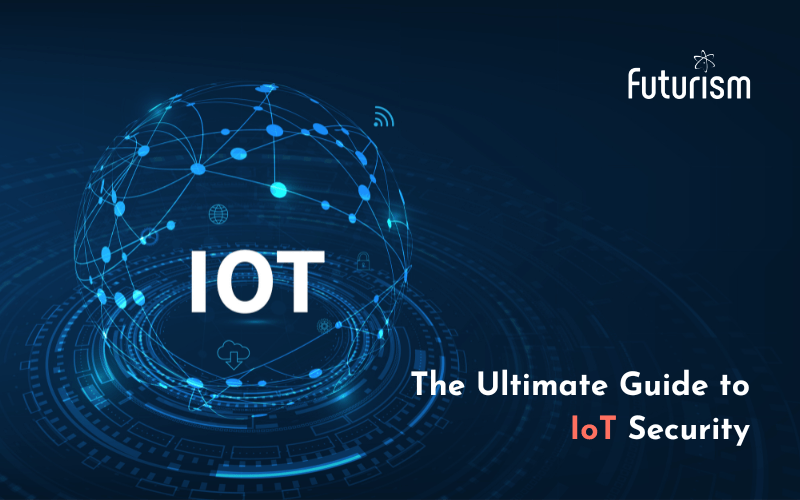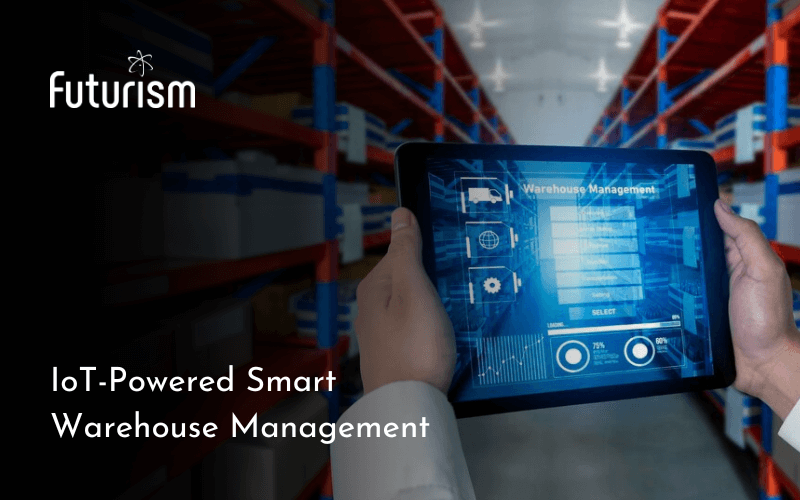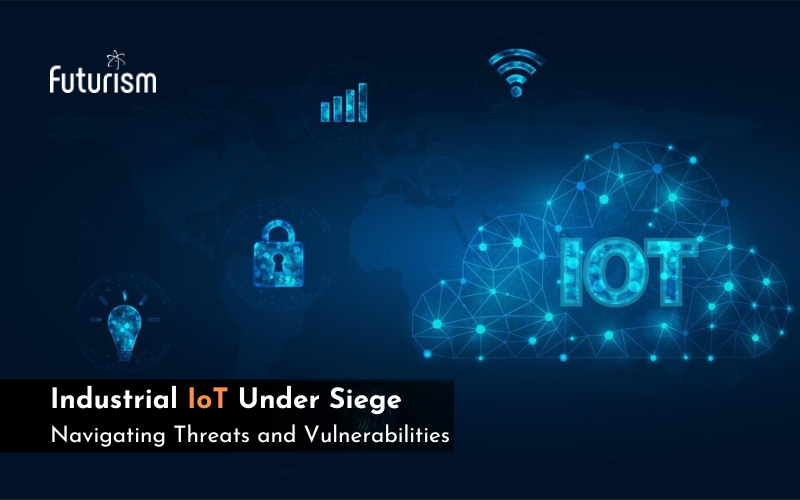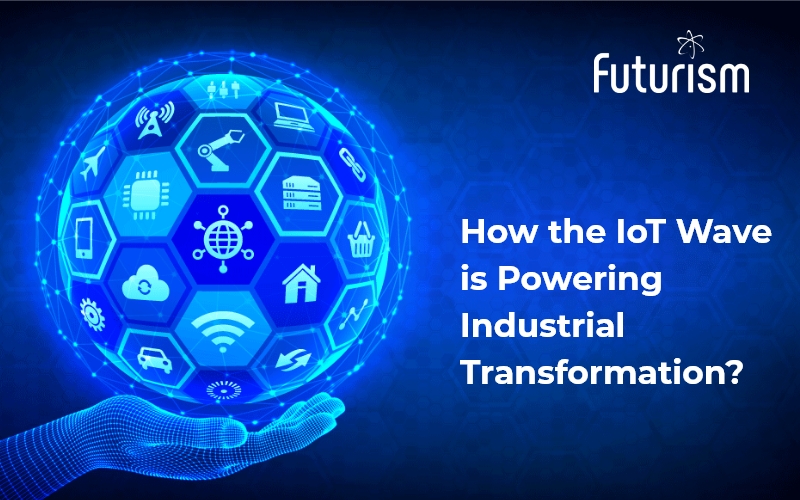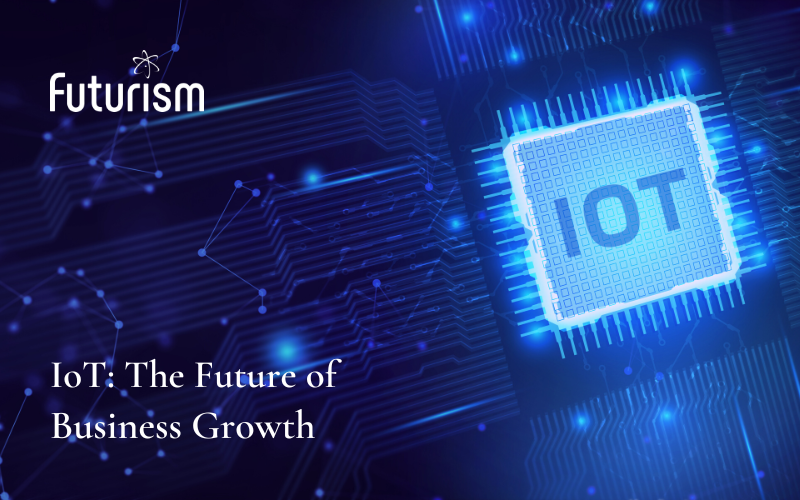AI and IoT: Dynamic Duo Reshaping the Digital World

Futurism Technologies
May 17, 2023 - 6.2K
5 Min Read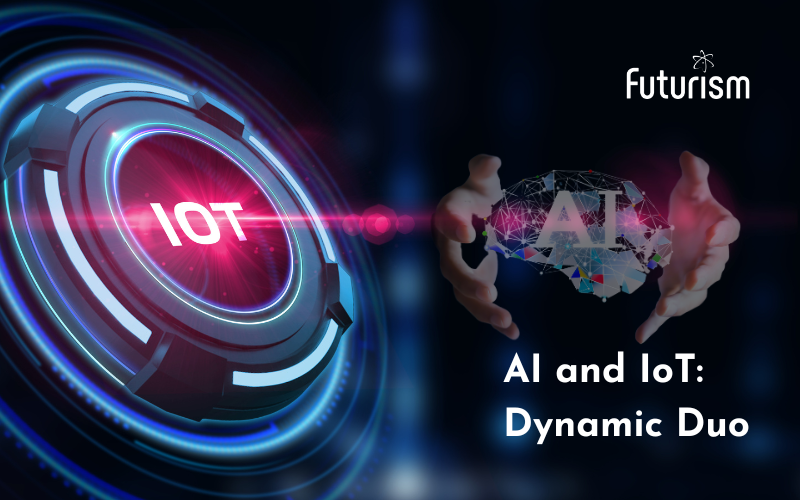
A seismic shift is shaping the business landscape with the widespread acceptance of the Internet of Things (IoT). Yes! IoT facilitates capturing of vast amounts of data from a plethora of sources and connected devices/equipment and machineries, producing a data deluge. However, managing, processing, and analyzing such monstrous amount of data from countless IoT devices remains a complex challenge.
Stepping into the future and fully leveraging the potential of IoT devices will require investment in groundbreaking technologies. A revolutionary interplay is being witnessed between AI and IoT, a convergence that promises to transform industries, economies, and businesses. AI-integrated IoT can create intelligent machines capable of emulating smart behavior and facilitating intelligent decision-making with minimal human intervention.
While IoT revolves around devices intercommunicating via the internet, AI centers on devices learning from their data and experiences. This article unpacks why the synergistic operation of IoT and AI is indispensable.
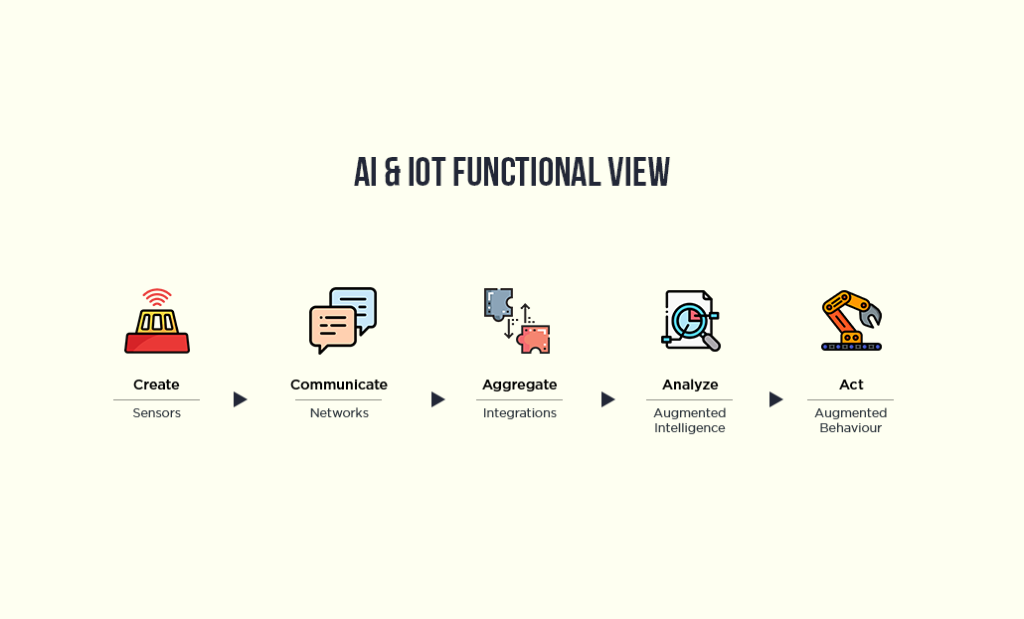
Unlocking the Potential of IoT with AI
At its core, IoT involves sensors embedded in machines, transmitting data streams through Internet connectivity. The five fundamental steps all IoT services must navigate are creating, communicating, aggregating, analyzing, and acting. Undeniably, the value of the “Act” hinges on the final analysis, thereby defining the precise worth of IoT during the analysis phase. This is the stage where Artificial Intelligence (AI) plays a pivotal role.
AI and IoT: A Functional Perspective
While IoT is the data source, AI has the prowess to unlock responses, providing creativity and context that spur intelligent actions. Businesses can make data-driven decisions based on the insights generated by AI analysis of sensor data. AI-powered IoT can offer versatile solutions such as:
- Swift and precise analysis ensuring meaningful insights from data
- Achieving a balance between localized and centralized intelligence requirements
- Striking a balance between data privacy and personalization
- Cybersecurity protection
Both emerging startups and established corporations are gravitating towards AI technology to fully exploit the potential of IoT. Major IoT platform vendors like Oracle, Microsoft, Amazon, and Salesforce have begun incorporating AI capabilities into their IoT solutions.
Perks of AI-Enabled IoT
The fusion of AI and IoT bestows numerous benefits on businesses and consumers, including proactive intervention, personalized experiences, and intelligent automation. Some of the key business advantages derived from merging these two disruptive technologies include:
Amplifying Operational Efficiency: AI-enabled IoT can process continuous data streams and discover patterns imperceptible to simple gauges. Machine learning, when combined with AI, can predict operational conditions and identify parameters that need modification for optimal results. For instance, Google leverages AI to reduce its data center cooling costs through IoT.
Read also: How the IoT Wave is Powering Industrial Transformation?
Enhanced Risk Management: The integration of AI and IoT enables businesses to better comprehend and forecast a wide array of risks, facilitating automated responses. Thus, they are more equipped to mitigate financial losses, safeguard employees, and counter cyber threats. A case in point is Fujitsu, which uses AI to analyze data from wearable devices to ensure worker safety.
Pioneering New Products and Services: Natural Language Processing (NLP) is revolutionizing human-machine communication. Combining IoT and AI can enable businesses to expedite data processing and analysis, leading to the creation of new products or improvement of existing ones. Rolls-Royce, for instance, employs AI in developing IoT-enabled airplane engine maintenance facilities to detect patterns, predict equipment breakdown/failure to prevent unplanned downtime and uncover operational insights.
Bolstering IoT Scalability: An AI-powered IoT ecosystem can analyze and summarize data before transmitting it from one device to another, reducing data volume and enabling connectivity of multiple IoT devices. This is referred to as scalability.
Read also: AIoT: When AI Meets IoT
Curtailing Unplanned Downtime Costs: In industries like offshore oil and gas or industrial manufacturing, equipment breakdown can lead to expensive unplanned downtime. AI-enabled IoT allows for predictive maintenance that can foresee equipment failure and schedule routine maintenance, thereby averting the negative impacts of downtime.
AI and IoT in Action: Real-world Examples
A closer look at some businesses that have leveraged AI-integrated IoT to enhance user experience and create innovative business models can provide a clearer picture:
Smart Manufacturing/Smart Factory: Manufacturing is an industry that has readily embraced disruptive technologies such as IoT, AI, deep learning, facial recognition, and robotics. Factory robots, with implanted sensors for data transmission, are getting smarter. Equipped with AI algorithms, these robots can learn from new data, enhancing the manufacturing process while saving time and resources thus, enabling a smart factory.
Autonomous Vehicles: Tesla’s self-driving cars epitomize the perfect synergy of IoT and AI. These cars use AI to predict pedestrian and vehicle behavior under varying conditions, like road conditions, optimal speed, and weather, thereby getting smarter with each journey.
Retail Analytics: In the retail industry, multiple data points from cameras and sensors track customer movements and predict checkout timings. Consequently, the system can suggest dynamic staffing levels to reduce checkout times and increase cashier productivity.
Read also: How Ai is Reinventing the eCommerce Industry as we see it today?
Smart Thermostats: An excellent example of AI-enabled IoT is Nest’s smart thermostat. Based on users’ work schedules and temperature preferences, the smartphone integration can monitor and manage temperature remotely.
The combination of IoT and AI holds the potential to spur innovative solutions and experiences. Integrating AI with incoming data from IoT devices can bring more value to your network and catalyze business transformation.
The Future of AIoT
With AI integration, IoT evolves into a smarter system, aiming for accurate decision-making with minimal human intervention. One of the most promising advancements in AIoT is the incorporation of 5G. With its superior bandwidth and lower latency, 5G is poised to facilitate faster transfer of large data files in IoT devices. AIoT could potentially address current operational challenges, such as the cost of effective human capital management, or the complexity of supply chains and delivery models.
By tackling the challenges of integrating sensors, networks, cloud, and applications while ensuring security, Futurism’s comprehensive IoT solutions can help you secure a long-term competitive edge. We leverage our industry-specific knowledge and IoT technology expertise to assist you in transforming your business through informed decisions backed by robust IoT and AI solutions.
Subscribe Now!
TRENDING POSTS
-
Futurism Returns to Hannover Messe 2024: Leading the Charge in Industrial and Digital Transformation
-
The Role of Smart Maritime IoT Solutions in Enhancing Maritime Safety
-
Data Integration Unlocked: From Silos to Strategy for Competitive Success
-
Navigating the Shadows: Understanding Zero-Click Attacks in the Digital Age
-
AI Reimagined: Crafting Next-Gen AI Apps with Expert Fine-Tuning
-
Explore Next-Gen Digital Solutions with Futurism at MWC 2024
-
Futurism Unleashes the Technology of Tomorrow at MWC Barcelona 2024
-
Futurism AI: Turning Ideas into Apps at Lightning-Fast Speed
-
Accelerate AI Across Your Enterprise With Futurism AI
-
Futurism to Address the Biggest Security Challenges at RSS 2022
-
Futurism at SelectUSA 2022: Steering the Next Wave of Businesses
-
Futurism to Uplift the MSP Business Community at the MSP Expo 2022
-
Futurism Sets Out to Address the Biggest Security Challenges at the RSA Conference 2022
-
5 Ways to Prepare Your Business for Digital Transformation
-
4 Ways To Win at Digital Transformation on a Shoestring Budget
-
Futurism: Empowering MSPs at the Channel Partners Conference & Expo 2022
-
Why AI in Digital Marketing is the Next Big Thing?
-
Futurism brings ‘Mobile First Digital Transformation’ to the fore at MWC Barcelona 2022
-
Cybersecurity for Rural Hospitals: How can Rural Hospitals become Cyber Smart?
-
Futurism Empowers Rural Health Care Community at the AHA Rural Health Care Leadership Conference
-
The Biggest Problem With Cybersecurity In Healthcare Sector, And How IBM QRadar Can Fix It?
-
How IBM MaaS360 is Revolutionizing Endpoint Security in the Healthcare Industry?
-
Futurism to Present its MSP Partner Program at the Channel Partners Conference & Expo 2021
-
EndPoint Security in Healthcare Matters and IBM MaaS360 Can Help
-
How AI Will Enable Faster Adaptation of Digital Transformation
-
How Is Digital Modernization Important In Supplier On-Boarding?
-
Top 10 Email Marketing Tips for This Holiday Season
-
Benefits of using ERP Software for Energy and Gas Industries
